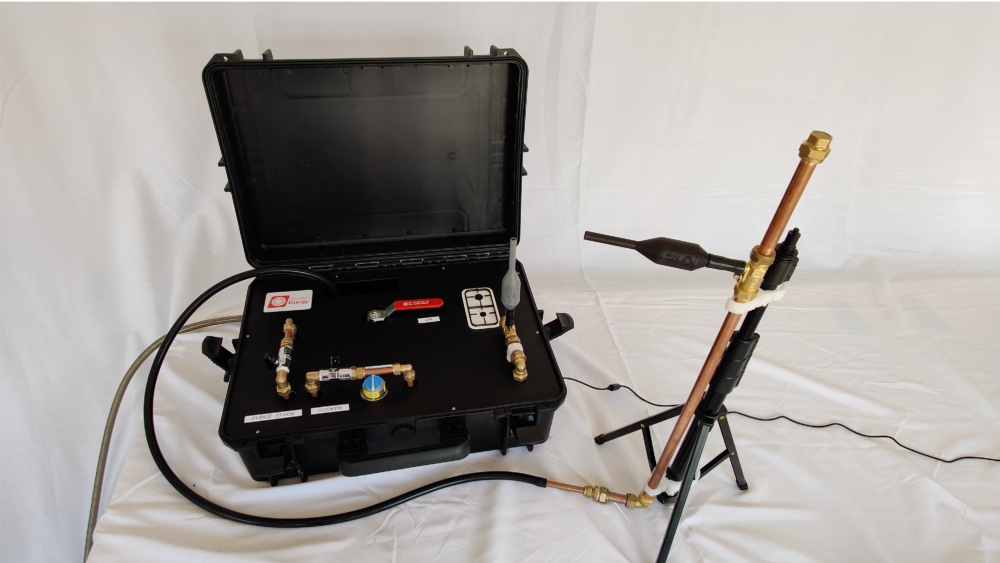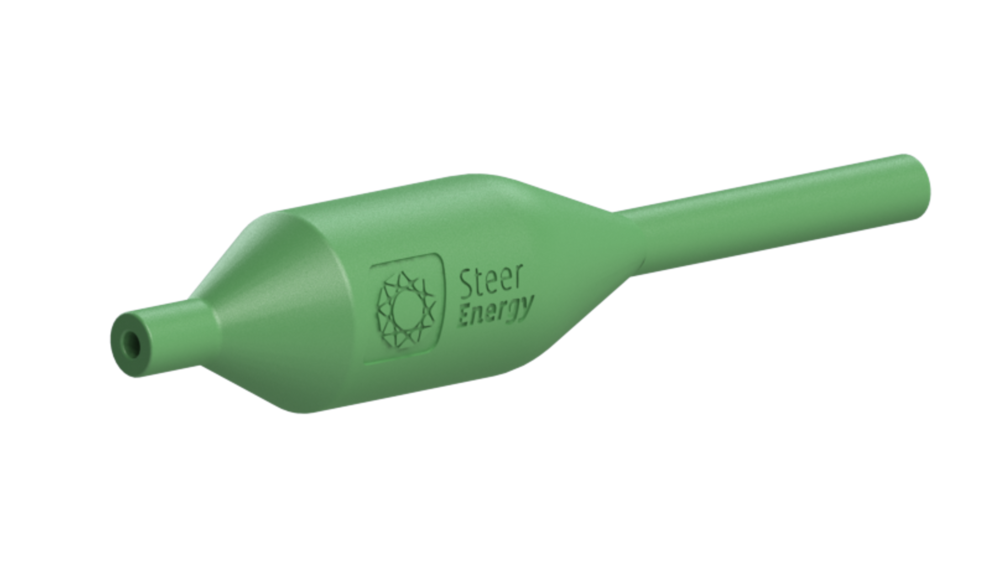Whystle
An elegant audio device for indicating the start, transition and end of a gas purge

What is purging?
When a new gas pipe is installed, the air filling the pipe has to be replaced with fuel gas. This process is called purging. During the purge, some of the fuel gas mixes with the air in the pipe, creating a potentially explosive mixture in the system. Current legislation on purging mitigates the hazard of this flammable mixture resulting in a safe process. This has been designed and written for Natural Gas, and due to its more flammable nature, may not be suited to Hydrogen.

A non-electric solution
Purges can be measured using gas detectors which are generally expensive electronic devices which need regular calibration and batteries changing. Testing for purge completion by attempting to ignite the gas may result in damage to the system if the purge is not complete.
Therefore, a cheap non-electric method of measuring the purge is an attractive option to make purging simpler and safer.
Real time indication of the process
Steer Energy’s purge wHystle is an elegant, non-electrical device that indicates the start, transition and end of a purge by sound.
The wHystle note changes in response to the gas flowing through the system, thereby providing a real-time indication of the purge progress. Since it works by sound, the Operative does not have to constantly look at a readout but can control the purge or monitoring the gas flow.

Making work safer
The wHystle indicates when pure hydrogen (or other fuel gas) is flowing, so it reduces the risk of attempting to light an incomplete purge. It can be used on purge points, purge stacks, directly on appliances, or built into fittings. It will detect and differentiate between air, Natural Gas and hydrogen.
We believe wHystle will make the work of gas engineers and installers safer and easier. It directly indicates the purge progress without needing to be constantly visually monitored.
For More Information
Contact:
